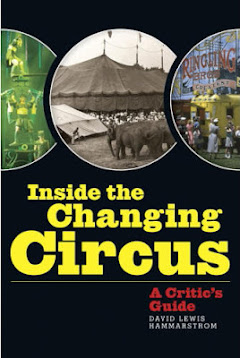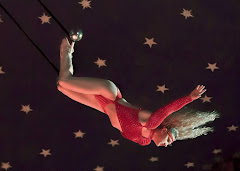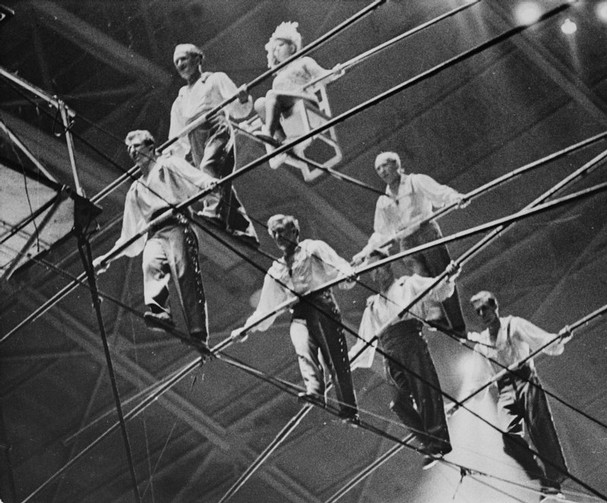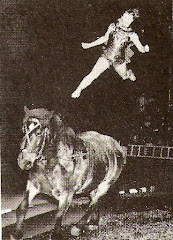
Cold in Chicago. Critically cold. Cold as out-of-down doom for a Broadway bound show in deep deep trouble. This one is a Cirque du Soleil production called Banana Shpeel, and it's being tried out prior to a New York premiere in February. Originally billed, according to a story in the Chicago Tribune by Chris Jones, as a “distinctive fusion of vaudeville, clowning and musical comedy” (did we not get that in Gene Kelly’s lavishly ill-fated ClownAround?), this was to be the company’s auspicious foray onto the legit stage.
Going into rehearsals, they had the talent to do theatre. Songs by Laurence O’Keefe (Legally Blond). Neon stars like Annaleigh Ashford and Michael Longoria to sing them. But the creative staff evidently hadn’t the stomach to rewrite themselves out of a mess that blossomed during some ominously troublesome run-throughs. Gone in a Montreal bloodbath were the two stars, the composer and all his music. Director David Shiner, not among the yet evicted, defended the pre-Chicago purges: “The show was becoming too story based. We also wanted to include clowning and variety. But the story element was outweighing everything else.”
The show’s producer, Serge Roy, said it was “dragging.” Shiner called it “a learning process for everybody.”
Cirque King Guy Laliberte, whose world wide creative reach is a spectacle to behold and whose idea it was to mount a vaudeville show, may be in for a sobering reality check if he does move Banana Shpeel all the way east onto the Beacon stage. The effort to merge theatre and circus has never really worked. One of the two forms must take the lead, allowing the other shadow status. And when that happens, we assume the survivor — in this case, cirque rather than Shakespeare -- will be strong enough on its own time-tested terms to win profitable patronage.
Long identified in the public’s mind as acrobatic-centered entertainment, Cirque now has an uphill battle. Even if they can salvage their ailing patient by defaulting back to acrobat & clown mode, how well might a circus from Montreal come across on stage in mid-town Manhattan?
Customers during Chicago previews have been acutely unkind. On the website Yelp!, the average rating (out of a possible 5) is 2. Among nine contributors, groused a self-described CDS lover, “rotten ... I felt like I was watching a bad episode of the Stooges.” And, noticed he/she, many around did not return after intermission. Seems a repeat of the early bum audience reception to Cirque’s Vegas magic show, Believe, only this time it’s worse.
Probably, imbued with a touch of hubris, the Montreal fantasy factory threw this thing into rehearsals believing they could easily shape and hone it as they have virtually all their other shows. "We were getting into a world in which we are not at ease," admitted Roy to the Tribune.
They may be learning a lesson -- or not. “Cirque, in essence,” wrote Jones, “went back to a world in which it is more comfortable. And within which it has never failed.” But that might not be quite the case. Even though there are some circus acts in Banana Shpeel, the show, states Shiner, is now "based in comedy and dance." Dance? By that statement alone, I'd say that things still seem dubiously off the usual Cirque axis.
Perhaps the blood bath will have proven a wise act on the road to another fail-safe success. But I’m not betting on anything at this point. Laliberte could decide to shut down a shaky experiment and spare himself a widely-covered Big Apple fiasco. On a Broadway stage, critical expectations are much higher than they usually are under a tent.
Banana Shpeel, now in previews at the Chicago Theatre, opens on December 2.
[photo by Scott Strazzante/Tribune photo]
11.27.09









































